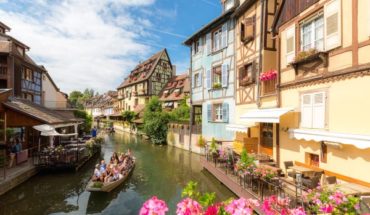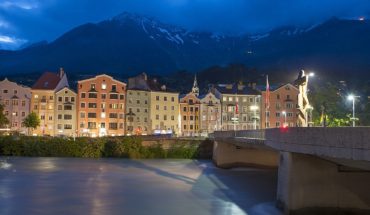Waking with a bump as we landed, the first thought was that another stage of the plan to avoid jet-lag had been successful. With thanks to Turkish Airlines criminally understaffed transfers desk (and having attained a visa), two of my precious hours had elapsed, I took solace that I wasn’t as stressed as those in the queue who had proper time-constrained transfer enquiries. I was ready. Flights to Turkey? Not nearly as expensive as I expected either.
Tourist information helpfully suggested that I take the metro for the price of two Turkish Lire (TL) (around £1) per journey but, in the course of searching for the station, I was hailed, ironically, by a private hire operator. The first of many times during my visit to Turkey, I would be regarded as “my friend” by a complete stranger.
He offered me a return journey on the airport shuttle bus into the beating heart of the city centre, which he misleadingly assured me the metro didn’t extend to, for 110 TL (roughly £55). As a Brit, I made my excuses and left, silently smug that I had avoided my first con attempt, and boarded the metro.
What to See in Turkey: 10 Hours to Run
- Employing my familiar and usually successful tactic of getting on the first vessel which arrives and riding that until something visually pricks my interest before alighting, I left the carriage, on this occasion, noticing an unassuming mosque, with many eateries in close proximity.
On the journey from the airport, the most impressive attribute is the scale. The airport, located as is customary, on the outskirts, seems remarkably close to the centre and in each direction tall buildings sit atop equally impressive peaks.
What to See in Turkey: Architecture
Spires, attached to mosques, spear the sky wherever you look. In other areas only construction cranes interrupt the clear blue. In the space of a 15-minute ride one experience the sweeping difference of a modern city, from multi-national chain stores and plush conference centres to abandoned greenery, divided by makeshift broken fences and dusty slag piles. Not too dissimilar to the most poverty stricken areas of East Glasgow.
The plush, polished modern homes at the “real Istanbul estate” are countered by decaying archaic multi-stories with large, slogan decorated cloth. Everything is terraced and tall and roughly three centimetres from the road on either side. The balconies, somehow dingy even in the bright sunshine, are strewn with tattered drying clothing – it’s reminiscent of the old style soviet housing which is prevalent in the Berlin’s East side.
Venturing off of the metro, the first thing apparent is the noise and pace. The road is a battlefield, short pips of the horn remind pedestrians that the pipper has right of way, an assertion ignored without exception by those on two feet. Meanwhile, if drivers are battling walkers for supremacy, they seem to be simultaneously waging a civil conflict amongst themselves.
Elsewhere, the conduct of those on the street make those in the airport appear monastic by comparison; shouting appears to be the minimum here, particularly at foreigners. If you’re a foreigner that’s easy to spot, as I, a white, strawberry blonde haired feller may be, and you’re solo, you’re a sitting target. But it’s not a bullseye on your back, it’s a dollar sign.
The only thing which seems to coax Istanbullers onto the street is to peddle their assorted wares. If you don’t learn how to say ‘no’ with enough force or you adopt a Danny Wallace approach, you’ll quickly accrue 200 pairs of fake sunglasses, 4,000 ropey Tommy Hilfiger shirts and more hooky perfume than Del Boy.
What to See in Turkey: Exploring
Likewise, if you fail to assert your confidence when crossing even a zebra crossing you’d best pack a tent, as you’ll be waiting all week if you’re unable to make that first step. Indeed, even while crossing with the perceived security of a red light, motorists will change lanes to avoid you, rather than stop.
If, while exploring, you wish to avoid the frequent interruptions to your progress, the tram is your best bet. Priced around the same as the metro, with connections en route, the tram provides a palatable alternative to scaling Istanbul’s steady, but sizeable, inclines. If time is against you, the tram should be avoided, as frequency of stops makes for disjoined progress, as you approach the area where sightseeing is easiest such as Gulhane, predictably space on the carriage becomes a premium, bordering on London underground levels of discomfort.
The further you ride the line towards Kabatas, the more historical value you will get from the tram, it was clear that this was the historic part of town and, like Southampton, remnants of the city wall still stand, in part. I opted to alight in the owing to the astounding sight of a magnificent palace. I quickly learned that it was the Hagia Sophia and that it was sadly closed on a Monday. As luck would have it, I’d left the carriage within a stone’s throw of the Turkish and Islamic arts museums, the museum of Muslim Science and Technology and a number of other education establishments.
Instead, I was encapsulated by the beauty of building which faced the final plane of the Hagia Sophia, as I finished my orbit, without invitation inside – the blue mosque.
I removed my shoes and stepped into one of the most amazing buildings I have ever seen. It is more than 600 years old and as light streams through the many stained windows it illuminates the most intricate ceramic domes, painted with the familiar patterns of the historic eastern Ottoman Empire. It is stunning and if my pictures do not do it justice and you pass up any opportunity to view this work of art, you need your head read.
What to See in Turkey: Acquiring a Follower
By this point, I had acquired a follower, but not of the positive twitter kind. Perhaps I had been too awestruck by the architecture to notice the rouse, whatever happened, I was aggressively rebutting the heavy sales tactics in his uncle’s shop ten minutes later.
It is far more difficult to avoid the sales tactics in a shop than I had experienced in the airport earlier in the day and my suggestion is to avoid entering buildings as a point of principle. As I shiftily finished my apple tea, a little too quickly, burning my tongue with each sip, I wondered how I could have been so stupid. Don’t make my mistake.
Dusk fell and the city became even more beautiful, though the sun illogically seemed hotter as afternoon surrendered to evening.
I walked along Bazogan aqueduct and the landscape in all directions was even more striking – each Islamic spire seeming to stretch even further into a blood red sky. 30, 40 syringes prick the skin on the impending night, each slowly injecting black ink until the sun is overcome.
In another example of Istanbul’s contradictory states the return to the airport was more than slightly saddening. As black filled the sky, more and more street traders stumbled onto the pavements, some with stalls, some with goods scattered on the floor. Previously quaint appearing restaurants and bistros on cue flick a large neon switch and morph into an establishment as gaudy as the last. Each try to shout louder than the other, ultimately achieving the opposite effect as a result – all appeared equal in the feeling of ambivalence displayed by passers by.
The only conclusion to be drawn from my short visit to such a confusing, vibrant, perplexing city is that I need more time to properly judge it. Slumping, exhausted in the airport lounge it was entirely apparent that this place, which presented each virtue with an entirely compelling counter argument from the opposite end of the spectrum, is a totally Newtonian settlement.
In equal parts beautiful, inspiring, detestable and disgusting, perhaps it is so confusing that even with ten years consideration, I will not fully understand. One thing I would have done in retrospect was look into high-quality language services ahead of time to make my life a little bit easier.


